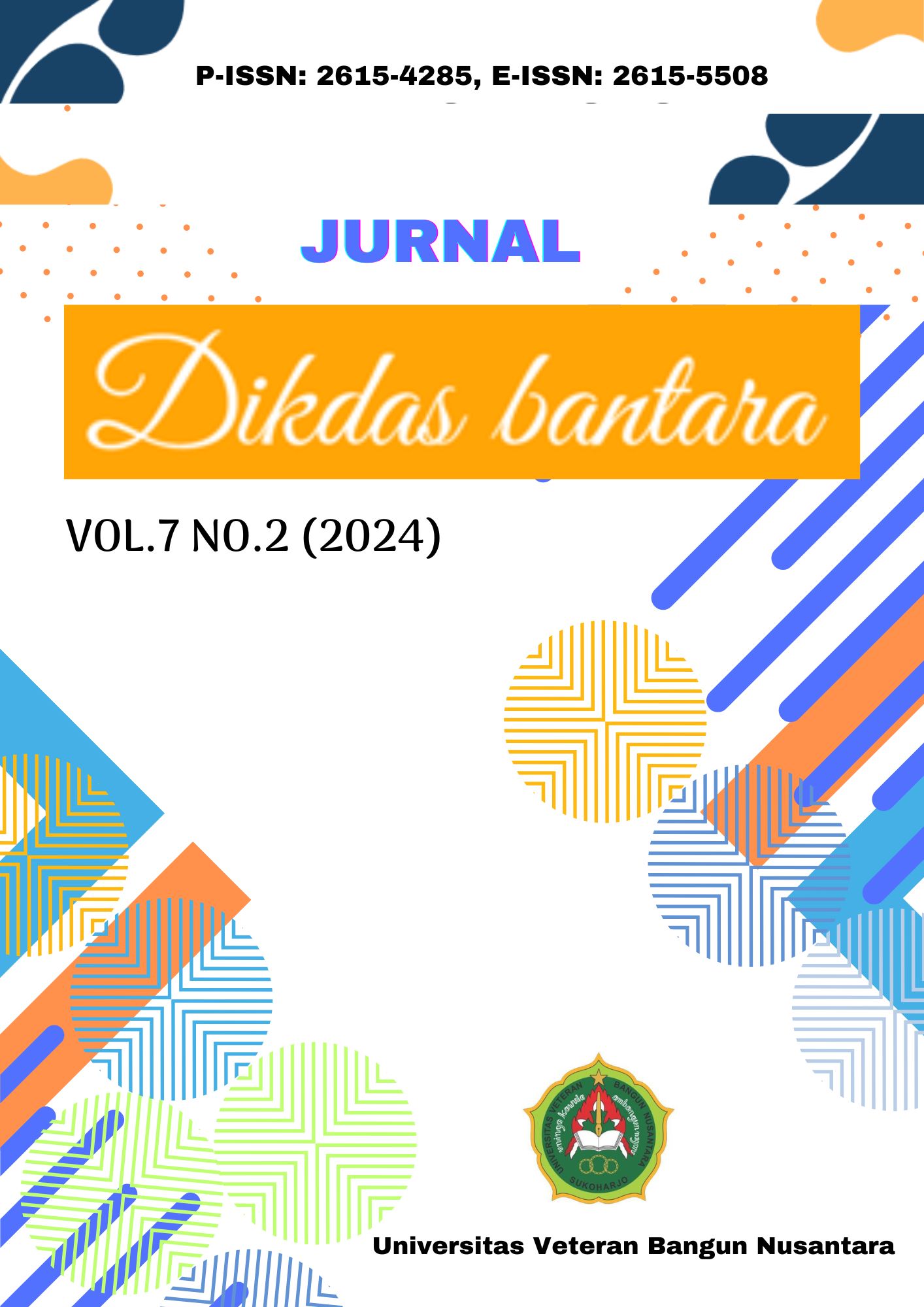IMPLEMENTATION OF THE TEAM GAME TOURNAMENT (TGT) MODEL IN IMPROVING COLLABORATION CAPABILITY CLASS V PRIMARY SCHOOL STUDENTS
DOI:
https://doi.org/10.32585/dikdasbantara.v7i2.5369Abstract
This research aims to describe the TGT model in improving collaboration skills in students. This research is descriptive research with a quantitative approach. The research was conducted on class V students at SD N 1 Sribitan, totaling 24 students, using data collection techniques through observation and tests. The data obtained was tested for validity and reliability. The results of data processing show that the collaboration abilities of class V students at SD N 1 Sribitan are categorized as always increasing in each cycle. This statement is based on the results of students' collaboration abilities, namely before the treatment the average was 60 and after the treatment in cycle I it became 72, and the results from cycle II got an average score of 90, and there was an increase in collaboration which was marked by the achievement of collaboration indicators.So it can be concluded that the application of the TGT model can have a good effect on students' collaboration abilities, because there is an increase in collaboration abilities in cycles I and II.
Downloads
Downloads
Published
Issue
Section
License
Copyright (c) 2024 Puthot Bagus Jati Kesuma, Henry Aditia Rigianti

This work is licensed under a Creative Commons Attribution-ShareAlike 4.0 International License.
The copyright to this article is transferred to Jurnal Dikdas Bantara if and when the article is accepted for publication under Creative Commons Attribution-ShareAlike 4.0 International License. The undersigned hereby transfers any and all rights in and to the paper including without limitation all copyrights to Jurnal Dikdas Bantara. The undersigned hereby represents and warrants that the paper is original and that he/she is the author of the paper, except for material that is clearly identified as to its original source, with permission notices from the copyright owners where required. The undersigned represents that he/she has the power and authority to make and execute this assignment.We declare that:
1. This paper has not been published in the same form elsewhere.
2. It will not be submitted anywhere else for publication prior to acceptance/rejection by this Journal.
3. A copyright permission is obtained for materials published elsewhere and which require this permission for reproduction.
Furthermore, I/We hereby transfer the unlimited rights of publication of the above-mentioned paper in whole to Jurnal Dikdas Bantara. The copyright transfer covers the right to reproduce and distribute the article, including reprints, translations, photographic reproductions, microform, electronic form (offline, online), or any other reproductions of similar nature. The corresponding author signs for and accepts responsibility for releasing this material on behalf of any and all co-authors. After submission of this agreement signed by the corresponding author, changes of authorship or in the order of the authors listed will not be accepted.
Retained Rights/Terms and Conditions
1. Authors retain all proprietary rights in any process, procedure, or article of manufacture described in the work.
2. Authors may reproduce or authorize others to reproduce the work or derivative works for the author’s personal use or for company use, provided that the source and the Jurnal Dikdas Bantara copyright notice are indicated, the copies are not used in any way that implies Jurnal Dikdas Bantara endorsement of a product or service of any employer, and the copies themselves are not offered for sale.
3. Although authors are permitted to re-use all or portions of the work in other works, this does not include granting third-party requests for reprinting, republishing, or other types of re-use.



















